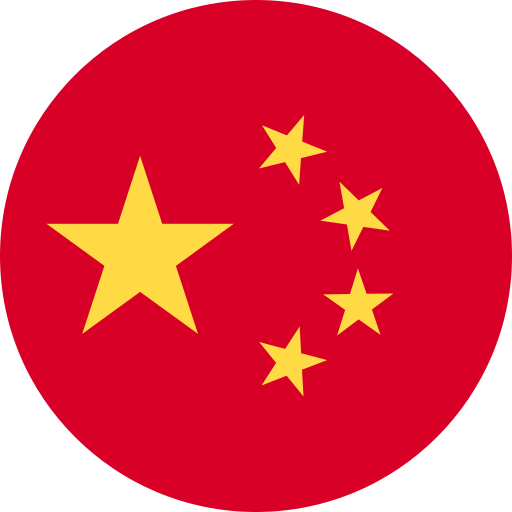Key Takeaways
- Distinct Language Families: Hakka and Chinese belong to the Sino-Tibetan language family, with Hakka often regarded as a unique dialect that has retained more archaic features than Mandarin.
- Phonetic Diversity: Hakka utilizes six to seven tones, which are crucial for meaning differentiation, while Mandarin employs four main tones. This tonal variation illustrates the linguistic richness of both languages.
- Unique Syntax and Grammar: Although both languages generally follow a Subject-Verb-Object (SVO) structure, Hakka includes archaic grammatical forms and sentence particles that differ significantly from those in Mandarin.
- Cultural Vocabulary Retention: Hakka preserves many original terms from Classical Chinese related to everyday life and traditions, whereas Mandarin incorporates modern vocabulary influenced by contemporary society.
- Regional Dialects Variation: Both Hakka and Mandarin have regional dialects; however, Hakka exhibits greater diversity in pronunciation and vocabulary within small communities compared to the more uniform nature of Mandarin.
- Cultural Influences on Language: The cultural backgrounds of each language shape their vocabularies and communication styles, reflecting historical migrations, agricultural practices, and social values inherent in their respective communities.
Have you ever wondered how Hakka and Chinese languages compare? With their rich histories and unique characteristics, understanding the linguistic differences can unlock a deeper appreciation for these cultures.
Overview of Hakka and Chinese Languages
Hakka and Chinese languages represent distinct branches within the Sino-Tibetan language family. Hakka, often seen as a dialect of Chinese, showcases unique phonetic characteristics that set it apart from Mandarin and Cantonese.
Hakka speakers primarily reside in southern China, Taiwan, and various communities worldwide. The language has retained many ancient features lost in other Chinese dialects. For instance, Hakka preserves more original vocabulary and phonetics compared to Mandarin.
Chinese encompasses several major dialects, with Mandarin being the most widely spoken. Each dialect carries its own tonal system and pronunciation rules. While both Hakka and Mandarin share roots in Classical Chinese, their divergence creates significant differences in syntax, vocabulary, and tones.
Understanding these linguistic nuances enhances appreciation for each culture’s heritage. Exploring how these languages evolved provides insight into historical migration patterns and cultural exchanges among different regions of China.
The study of Hakka can reveal fascinating aspects of identity among its speakers. It often incorporates elements from surrounding languages due to geographic proximity to various ethnic groups. This blend enriches the linguistic tapestry of Hakka while highlighting its adaptability throughout history.
Recognizing these distinctions fosters a deeper connection with the diverse linguistic landscape that exists within China today.
Linguistic Features of Hakka
Hakka showcases distinctive linguistic features that set it apart from other Chinese dialects. Understanding these aspects reveals the richness of Hakka and its unique position within the Sino-Tibetan language family.
Phonetics and Phonology
Hakka phonetics exhibits notable characteristics, including a range of tones that vary by region. Typically, Hakka uses six to seven tones, which can change meaning entirely based on pronunciation. The vowel system is also diverse, featuring several diphthongs and nasal sounds not commonly found in Mandarin or Cantonese. For example, the word for “mother” varies in tone across these dialects: Hakka uses a distinct tonal variation compared to its counterparts. This tonal richness adds depth to everyday communication among speakers.
Syntax and Grammar
Hakka syntax differs significantly from Mandarin and Cantonese structures. It often employs a Subject-Verb-Object (SVO) order like Mandarin but has unique sentence particles that convey mood or aspect. Additionally, Hakka retains many archaic grammatical forms missing in more modern Chinese dialects, reflecting its historical roots. For instance, certain classifiers used in Hakka still hold meanings tied to ancient practices, offering insights into cultural heritage. The flexibility in word order allows for expressions that capture subtleties absent in standard Chinese grammar.
These linguistic features illustrate how Hakka stands out as both a language and cultural artifact among Chinese dialects while revealing deeper connections within China’s diverse linguistic landscape.
Linguistic Features of Chinese
Chinese languages exhibit a rich tapestry of linguistic features, showcasing their complexity and diversity. The most prominent language, Mandarin, serves as the official language of China and is characterized by its distinct phonetic system and tonal nature.
Phonetics and Phonology
Mandarin employs four main tones that can change the meaning of words entirely. For instance, the syllable “ma” can mean mother, horse, scold, or hemp depending on its tone. This tonal aspect makes pronunciation critical for effective communication. Additionally, Mandarin’s vowel system includes both simple vowels and diphthongs but lacks some nasal sounds present in other dialects like Hakka.
Syntax and Grammar
Mandarin predominantly follows a Subject-Verb-Object (SVO) structure. This straightforward syntax allows for clear sentence construction. Mandarin also utilizes measure words when counting nouns; for example, one must say “one book” as “一本书” (yī běn shū), highlighting the importance of classifiers in Chinese grammar. Furthermore, verb conjugation differs significantly from English; verbs remain unchanged regardless of tense or subject pronoun.
Understanding these key linguistic features enriches your appreciation for not just Mandarin but also the broader spectrum of Chinese languages. Each variation offers unique insights into cultural nuances that define communication across different regions in China.
Linguistic Comparison of Hakka and Chinese
Exploring the linguistic differences between Hakka and Chinese reveals fascinating insights into their unique structures. Both languages, while related, showcase distinct characteristics that highlight their cultural significance.
Vocabulary and Lexicon
Hakka features a rich vocabulary that retains many archaic terms from Classical Chinese, often absent in other dialects. You’ll find original words used to describe everyday life, nature, and traditions. Mandarin, on the other hand, has evolved with influences from various sources over time. It incorporates modern terms that reflect contemporary society. For instance, while Mandarin might use a borrowed term for technology-related vocabulary, Hakka often uses native words that evoke historical context.
Dialectical Variations
Hakka encompasses several regional dialects across southern China and beyond. Each variation can differ significantly in pronunciation and vocabulary yet maintains core elements of the language’s structure. Mandarin also exhibits dialectical variations based on geographic regions; however, it generally aligns more closely due to its status as the national language. In contrast to Mandarin’s relatively uniform nature across different areas, Hakka speakers may encounter considerable diversity even within small communities.
Understanding these aspects enhances your appreciation for both languages’ heritage while providing insights into how history shapes communication styles across cultures.
Cultural Influences on Language
Cultural influences play a significant role in shaping the Hakka and Chinese languages. These languages reflect the unique histories, traditions, and social practices of their respective speakers.
Hakka culture, with its roots tracing back to northern China, emphasizes community values and agricultural practices. This background is evident in the vocabulary used within Hakka, which contains terms specific to farming and rural life. For instance, words related to rice cultivation remain prevalent in everyday conversations among Hakka speakers.
Chinese culture exhibits its own distinct characteristics that influence language use. The Confucian emphasis on respect and hierarchy permeates Mandarin communication styles. Politeness forms an integral part of interactions, often leading to elaborate greetings or honorific titles when addressing individuals based on their social status.
Both languages also demonstrate how historical migrations impact cultural expressions. As Hakka speakers moved southwards over centuries due to various socio-political factors, they preserved many ancient linguistic elements that other Chinese dialects lost along the way. This preservation reflects a commitment to heritage while adapting to new environments.
Regional festivals significantly shape vocabulary as well. In both cultures, celebrations like the Lunar New Year infuse daily language with unique phrases and idioms connected to customs surrounding these events. Such terminology not only reflects cultural significance but also fosters a sense of identity among speakers.
Understanding these cultural influences enhances your appreciation for each language’s richness and complexity. Exploring how history shapes communication styles provides insight into broader societal patterns within China’s diverse linguistic landscape.
Conclusion
Exploring the linguistic comparison of Hakka and Chinese deepens your understanding of both languages and their cultural significance. Each language carries unique phonetic characteristics and historical influences that shape how speakers communicate and express themselves.
By appreciating these differences, you can gain valuable insights into the diverse heritage of China’s linguistic landscape. Whether you’re drawn to Hakka’s ancient elements or Mandarin’s modern evolution, recognizing the richness in each language enhances your connection to their respective cultures. Embracing this knowledge fosters greater respect for the intricate tapestry of communication within Chinese society.
Frequently Asked Questions
What is the main difference between Hakka and Mandarin?
Hakka and Mandarin are both part of the Sino-Tibetan language family but differ significantly in phonetics, vocabulary, and syntax. Hakka retains many ancient elements and features unique tones not found in Mandarin. While Mandarin is widely spoken as China’s official language, Hakka has distinct regional dialects with varied pronunciations.
How many tones does Hakka have?
Hakka typically has six to seven tones that can change the meaning of a word based on pronunciation. This tonal complexity sets it apart from other Chinese dialects like Mandarin, which uses four main tones.
What linguistic features make Hakka unique?
Hakka’s uniqueness lies in its diverse vowel system, including diphthongs and nasal sounds, alongside a Subject-Verb-Object (SVO) sentence structure. It also employs archaic grammatical forms and specific sentence particles that distinguish it from Mandarin and Cantonese.
Is Hakka considered a dialect or a separate language?
Hakka is often viewed as a dialect of Chinese; however, it possesses distinct characteristics that justify considering it a separate language within the Sino-Tibetan family due to its rich history and unique phonetic traits.
How does culture influence Hakka language?
Hakka culture emphasizes community values and agricultural practices, reflected in its vocabulary related to farming. Historical migrations have preserved ancient linguistic elements in Hakka while shaping its cultural expressions through festivals like Lunar New Year.
Why is understanding these languages important?
Understanding the linguistic differences between Hakka and Mandarin enhances appreciation for their respective cultures. It provides insights into historical migration patterns, cultural exchanges, and broader societal patterns within China’s diverse linguistic landscape.







